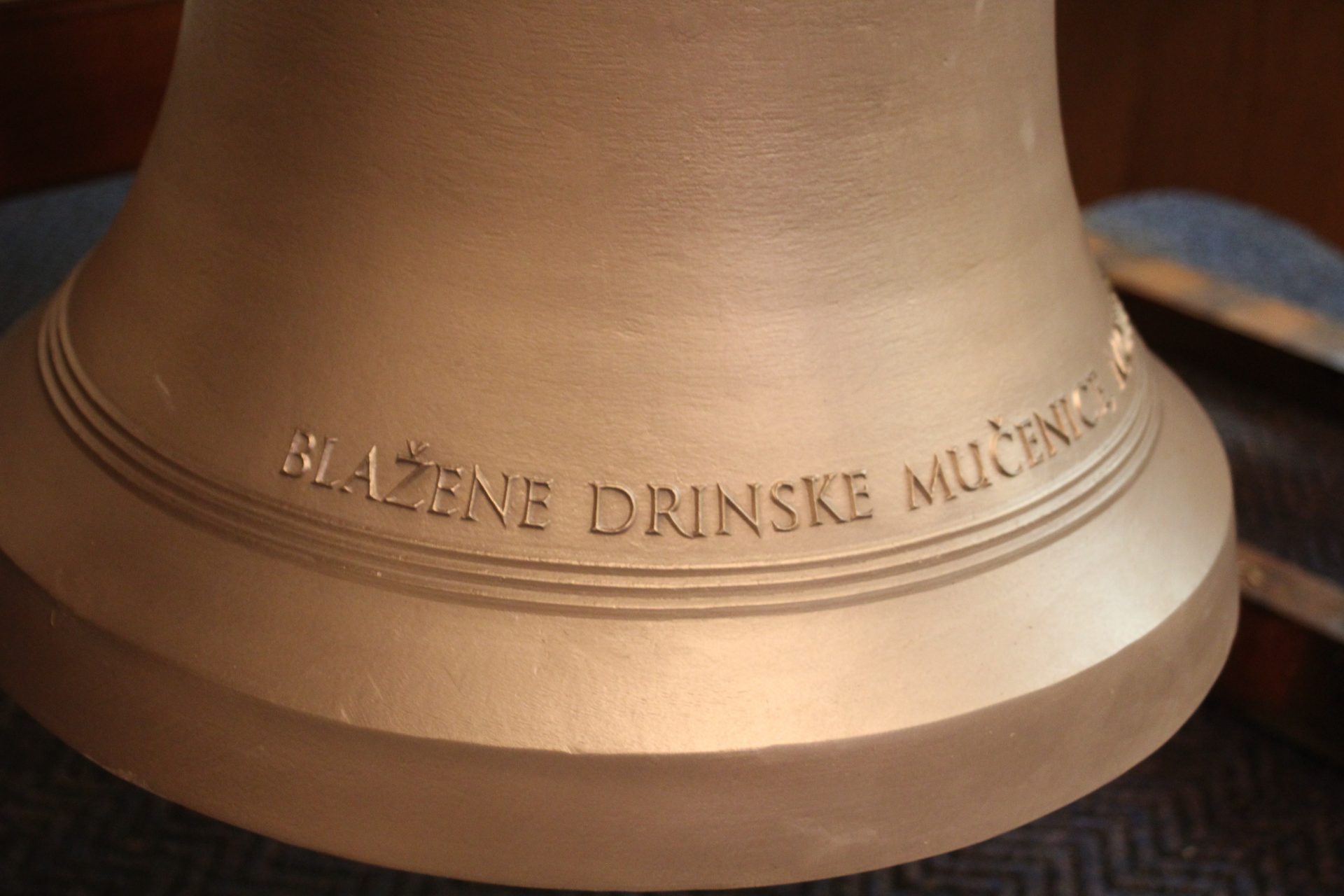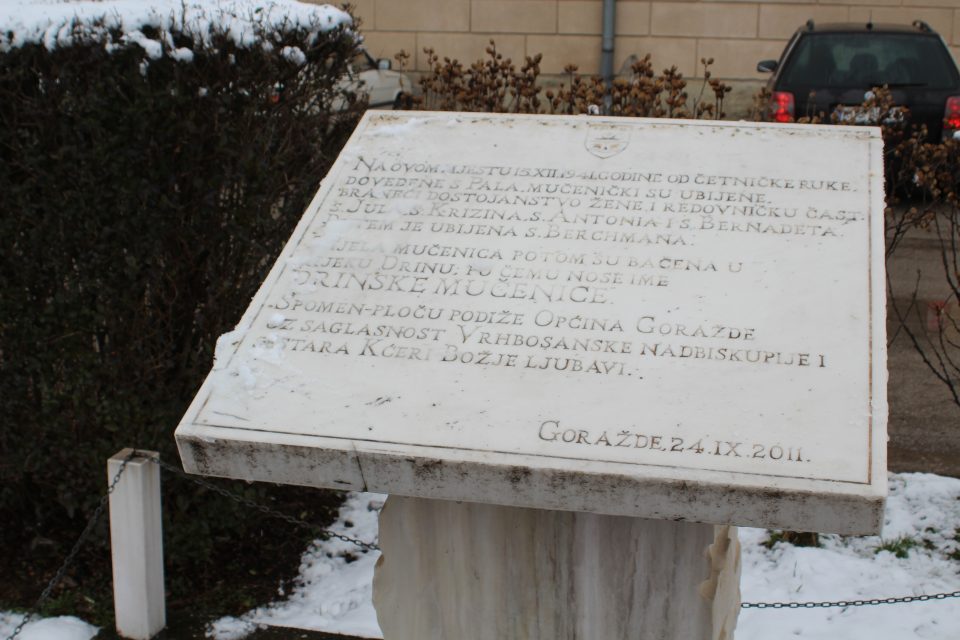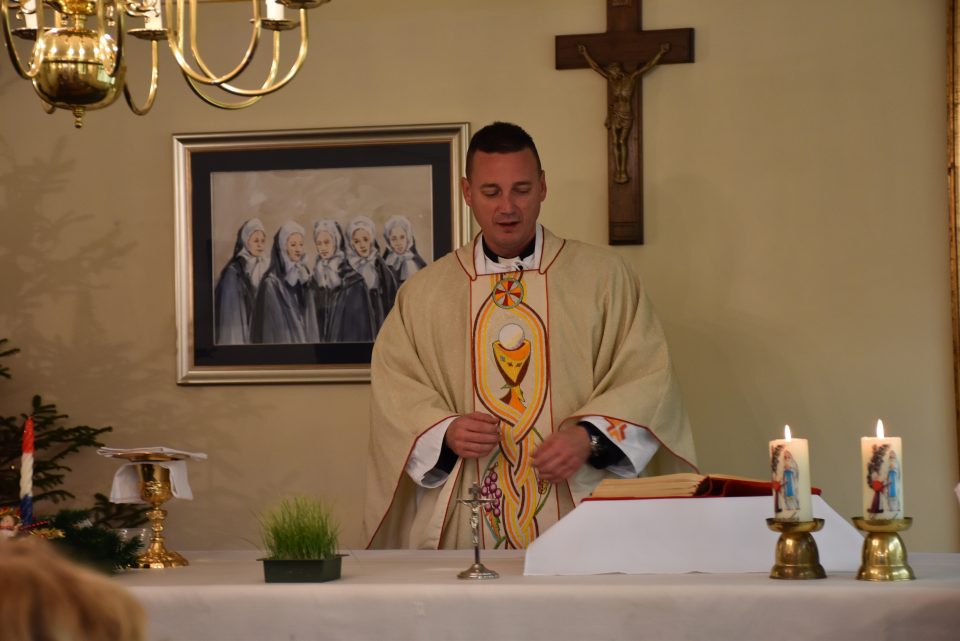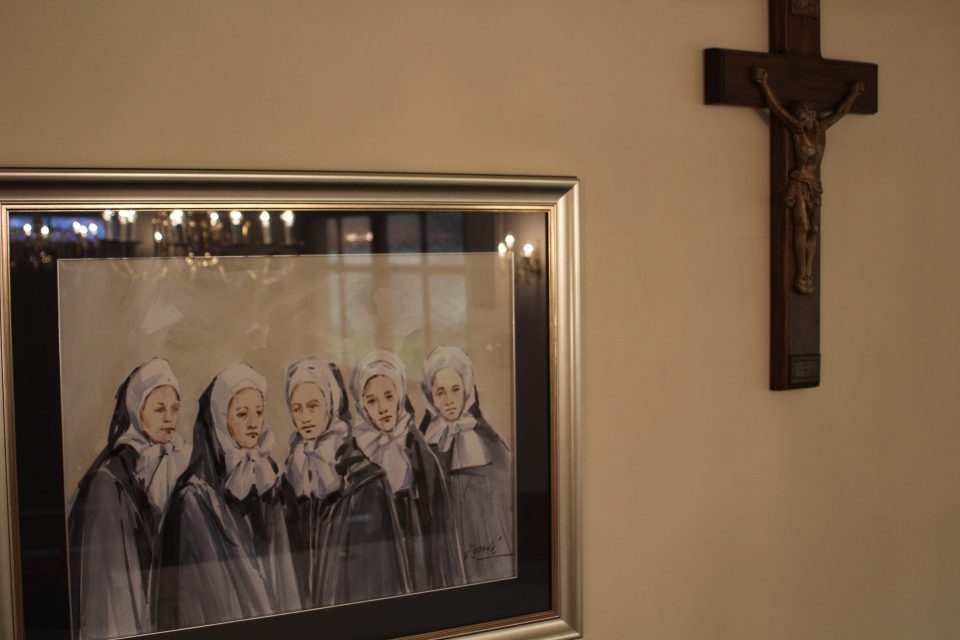
The Blessed Martyrs of the Drina are a symbol of the suffering of the people of the Podrinje region. Their story teaches us that love is more valuable and noble than hatred, and that war brings no good to anyone, only suffering and loss.
During the World War II, the Blessed Martyrs of the Drina provided food and medical help in the course of preserving their honor, purity, and religious vows. Although they have passed away, today, these religious figures symbolize the suffering of the women who, throughout numerous wars and aggressions, may well have made the greatest sacrifice.
Josip Tadić, the priest of Goražde parish, said that the construction of the church of the Blessed Martyrs of the Drina is underway and that they have managed to obtain a bell that reads “Blessed Martyrs of Drina, pray for us,” referring to all victims of past suffering.
Father Tadić believes that the Church of the Blessed Martyrs of the Drina will be a sanctuary. The consecration of the Church’s foundations last summer was attended by representatives of other religions, which shows the common life of shared by the different religious groups in the city on the Drina River.
During World War II, the Blessed Martyrs of the Drina were engaged in humanitarian work in the convent of Marijin Dom in Pale until they were captured by Chetniks who took many of them to their deaths. Residents of Goražde and Bosnia and Herzegovina, as well as Catholics from all over the world still remember this crime and visit the site of their suffering. The five nuns of the Congregation of the Daughters of Divine Charity struggled to preserve their honor and religious vows even at the cost of their own lives.

The Way of the Cross from Pale to Goražde
The Drina Martyrs helped people by providing food and medical assistance at the beginning of World War II (1939-1945). They were captured by the Chetnik army in December 1941, and their tragic fate brought them to the Way of the Cross, which ran from Pale, through Prača and Hranjen, to Goražde.
The eldest nun, Berchmana Leidenix, who was originally from Austria, was unable to endure the journey. She succumbed to exhaustion, staying in a place called Sjetlina, where she died. To this day, the place where the sister was buried has not been found. The other four nuns, Krizina Bojanc and Antonija Fabjan from Slovenia and Bernadeta Banja and Jula Ivanišević from Croatia, were brought to Austro-Hungarian military barracks at the site of today’s Husein ef. Đozo Elementary School, where they were detained on the second floor of the facility.
According to Father Tadić, it is believed that drunken Chetniks entered the room where the four nuns were detained, intending to rape them. However, the nuns were determined to keep their vow of chastity and jumped out the window, thus dying to defend their honor, dignity, and religious vows.

“Their broken bodies were stabbed with bayonets and thrown into the Drina River. The fate of the nuns was then experienced by other citizens of this city. I think that the girls, who knew what was in store for them, would have rather jump off the bridge into the Drina than be disgraced,” Father Tadić said. He noted that a month after the nuns’ tragic deaths, equally terrible suffering was inflicted on the Muslim community.
Father Tadić went on to describe how all those taller than a rifle were killed and thrown into the river. He says the best evidence of this is provided by Goražde native Don Anto Baković, a priest of the Vrhbosna Archdiocese, who bore witness to the suffering of the Drina Martyrs, as well as the Muslims in the area of Goražde.
“He left us a powerful account of that in his books, which was later the basis for starting the process of beatification of the nuns, who were beatified on September 24th, 2011. They were beatified by Pope Benedict XVI after his envoy, Cardinal Amat, who then solemnly celebrated the Holy Mass in Zetra and read the bull on the beatification,” Tadić explained.
Tadić states that the nuns are a symbol of the suffering of the people of the Podrinje region and that the lesson for all of us is that love is far more valuable and noble than hatred. The sacrifice of the nuns, as he points out, sends a message that war does no one any good, but brings only suffering and loss.
Tadić emphasizes that all people should respect and honor each other, and that they should love themselves and one another. “And if we all did that, this world would be truly perfect,” says Tadić.
Religious Pluralism and Nurturing Tradition
In the summer of 2021, when the foundation of the future church dedicated to the Drina Martyrs was consecrated, Catholic believers and officials were welcomed and supported by Mufti of Goražde Remzija Effendi Pitić, Imam Dženan Effendi Imamović, and Orthodox priest Mihajlo Andrić.
During the consecration, there was a young man from Herzegovina who saw an Orthodox priest coming to greet us Catholic priests and nuns and a bishop with ‘Praise be to Jesus,’ and we greet him with ‘Praise be to God.’ We hug because we are brothers in the priesthood. The same is the case when the Mufti of Goražde came. He greeted me with ‘Praise be to God,’ and I greeted him with ‘Es-selamu alaykum.’ We hugged and then the young man commented that we need such content in the media, to show that our religious officials are also friends,” Tadić recalls.
Dženan ef. Imamović believes that the suffering of the Drina Martyrs is an atrocity committed because the perpetrators lost their humanity the moment they lost the feeling that anything was sacred to them.
“For us, they are a symbol of sacrifice and suffering that many have endured for their faith and worldview. They especially symbolize the suffering of women who, throughout the numerous wars and aggressions in this region, endured perhaps the greatest hardships, preserving her chastity and dignity, while suffering long and in silence from the monstrosity of the perpetrators of injustices and crimes,” Imamović said. He adds that the attendance of the Mufti of Goražde, the premier religious authority in that part of Bosnia and Herzegovina, as well as the imam at the consecration ceremony for the future church clearly shows the Islamic Community’s support for the construction of the church dedicated to the Blessed Martyrs of the Drina.
Efendija Imamović is the coordinator of the Mufti’s congregation of Goražde for work with non-governmental organizations and is a member of the Committee for Interreligious Cooperation. He points out that meetings and communication among religious officials as well as joint activities and projects, in organizational terms, have been facilitated by the establishment of the Interreligious Council in Bosnia and Herzegovina, which has had a Committee for Interreligious Cooperation in Goražde since 2010.

“Thanks to Islamic heritage, Muslims nurture a long tradition of living with others. In Bosnia and Herzegovina, even in the most difficult times endured by Muslims, they have not given up on this attitude. So, they want to continue to develop this tradition in the country with all those who share this desire. This attitude is the result of a deep conviction that a world of diversity is the world that the One who created it wants. We believe that Allah Almighty is not bothered by Bosnia and Herzegovina’s religious pluralism,” concludes Imamović. He adds that it is in the interests of various ‘elites’ that positive examples of co-existence remain in the shadows of negative events.
Tadić explains that no one can be more important to him than his neighbor, the neighbor who is closest to him, and that we must all be people who are ready to forgive each other and communicate with each other. He states that the people of Bosnia are very proud, referring to what Bosnian’s call inat which roughly translates as “stubbornness” or “spite.” “There’s no people more stubborn than Bosnians,” Tadić says.
Vildana Bašić from Goražde, an activist in the fields of peace-building and cultures of remembrance, believes that in our society, the memory of the victims of fascism and Nazism is preserved, but often in the wrong way.
“If we want to live in a society where we will be able to live and express ourselves freely, without repeating crimes and wars, it is important that we remember the victims of fascism. I also think it is important to distinguish between remembering the victims and reliving those events from the past. The Blessed Martyrs of the Drina are a symbol of resistance to the rapist and of the fight for women’s rights, and are a courageous example of preserving their chastity and their religious beliefs,” says Bašić. She concludes that young people should learn much more about the Drina Martyrs, the evils of fascism, and the positive values of anti-fascism through formal and non-formal education.
Construction of the Church of the Blessed Martyrs of the Drina
The Vrhbosna Archdiocese is the main investor in the construction of the church dedicated to the Blessed Martyrs of the Drina. Although Goražde is a city where a very small number of Catholics live, Father Tadić and his parishioners are working to successfully complete the construction project. He said they have strong motivation and desire because God always protects good and brave people. “I believe that every job that is done, or any construction, if God wants it to be built, then it will be, regardless of the number of believers,” says Tadić.

Tadić explains that construction is underway and that they have managed to get a bell for the church. “The bell was cast in Austria, by a company that has been casting bells for hundreds of years. One of our men from Bosanska Posavina also works there. When I ordered the bell and when he saw that we need the bell, it was made ahead of schedule. We were supposed to wait until the second month (2022), but it was done in 15 days. It reads ‘Blessed Martyrs of the Drina, pray for us,’” says Tadić.
He explained that “us” refers to all those who have suffered in the past and those who, like the Drina Martyrs, suffered the hardships of the wars that were fought in this region.
The rest of the construction of the Church of the Blessed Martyrs of the Drina will be completed in time, as Tadić said. “You know that when a house is built too fast, there are a lot of omissions. Better to go a little slower, but to do as God commands. I hope that the course of construction will be continuous and that we will be able to design a church which will be recognizable by all the paintings and stained glass which we plan to install. We want the life of the people of this region to be written on its walls,” concludes Tadić.






